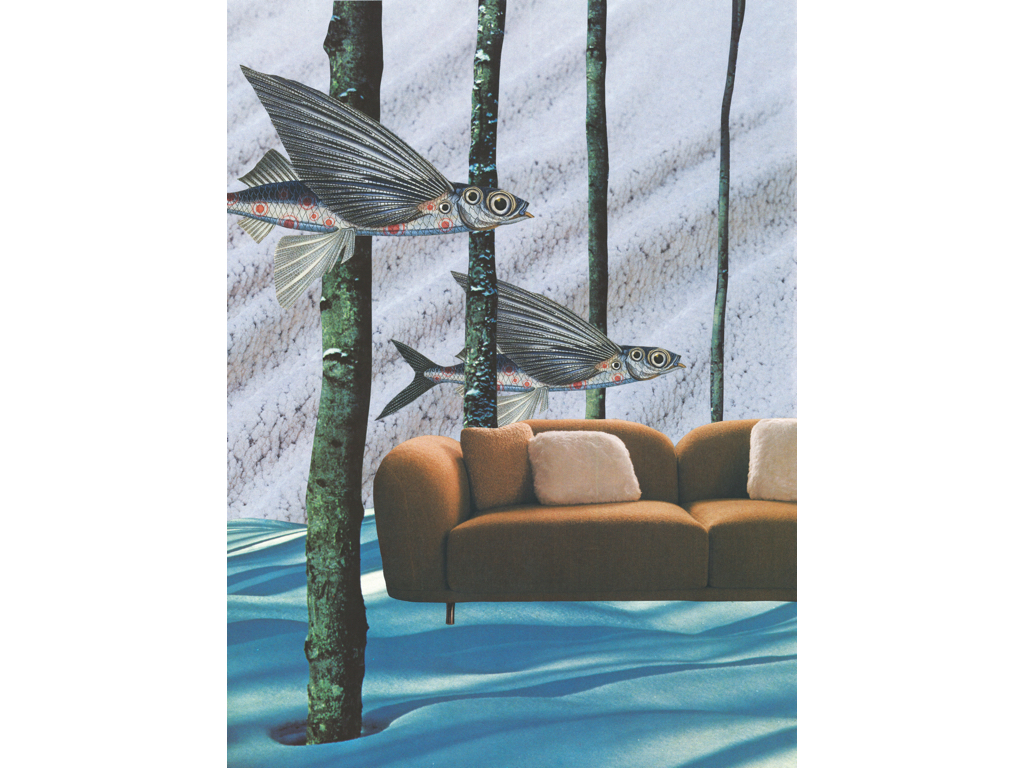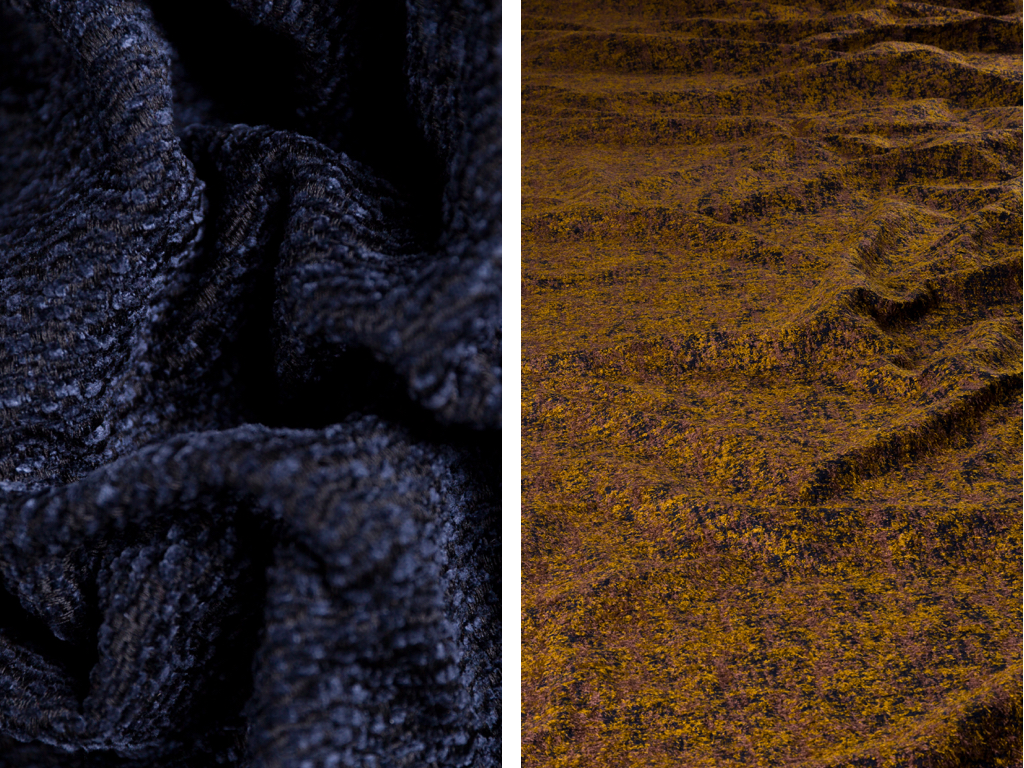In the Museum of Extinct Animals, a real yet fantastical place presented by Dutch furniture brand Moooi during this year’s Salone del Mobile, visitors are transported to bygone eras when improbable creatures like the blushing sloth (bradipus tridactylus rubesco), bearded leopard (panthera pardus barbitium), and flying coral fish (exocoetidae coralium) wandered the earth. Found drawings of these and more animals served as the muse for Moooi’s latest three-part collection (carpets, wallcoverings, textiles), the first of which will launch in September.
“The interplay between the three types of surface gives a dimensionality to these creatures,” says Christie Wright, who leads art direction at Moooi. “They offer a way for us to bring tactility into our upholstery in a creative, surprising way.”
For Moooi (a play on mooi—“beautiful” in Dutch), the textiles present an opportunity to revisit traditional production processes such as jacquard weaving and leather-tanning. They’re also means of paying homage to the natural world—both real and imagined—that has long inspired designers.
“So much of what has lived is lost, and can only live in our imaginations,” says Marcel Wanders, Moooi’s cofounder and creative director. Through design, he believes, the past can be brought back to life.
To select the 10 animals, his team pored over thousands of antique illustrations and explorers’ notebooks, searching for critters with the most intriguing characteristics or exotic traits. In choosing the calligraphy bird, for example, Moooi hoped to evoke its mating ritual, in which the female fans her tail feathers and creates scriptlike swirls in the air. The result is a woven jacquard created on the loom with “feathers” created by slubbed yarn. The dodo’s plumage is represented in a more abstract way, via chunky chenille entwined so it reveals part of the warp, a reference to the bird’s eccentric disposition. A bison’s fur translates into high-pile cotton velvet, using a traditional cotton weaving method with the material cut in half in an uneven way, creating a dense hair-like texture.
In each case, the resulting textile captures a creature’s distinctive character with an abstract, universal language of patterns. “As we ventured further into this project, we started seeing animal textures everywhere: Tire tracks in the sand looked like snakeskins, poured concrete evoked a rhino hide, wrinkled paper resembled scales of a fish,” says Wright. “We realized that the natural world really is part of our everyday lives—and wanted to connect that experience to the fabrics and the homes that we create.”
(Opening image, from top: Dodo Pavone Jacquard; Cloud sofa by Marcel Wanders upholstered in Blushing Sloth Melange Mohair, $9,747; Cloud Pillow Blushing Sloth Curly Mohair, each $431; Cloud Pillow Plush each $360; all at moooi.com; Flying Coral Fish (exocoetidae coralium), illustration by Charles Henry Dessalines d’Orbigny (1806–1876), ink on paper, c.1849. Photos: Textile details courtesy Moooi. Other photos by Andrew Meredith for Moooi.)
This story was conceived, produced, and edited by Surface Studios, the creative agency of Surface Media.



